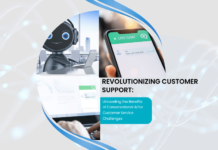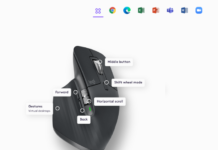According to Cisco’s inaugural AI Readiness Index, 84% of companies think AI will have a very significant impact on their business but merely 14% of organizations globally are fully prepared to deploy AI-powered solution in there businesses. As Artificial intelligence has been reshaping business, the advent of Generative AI orchestrate tasks, spur new ideas, sharpen decision making and integrates the workplace functions. Let’s explore how can GENAI measure customer feedback and how leaders can turn its vast potential into measurable business value.
In today’s competitive market, customers expect high-quality service and seamless interactions, thus it is important for businesses to improve the quality time to time by tracking the positive or unsatisfactory customer experience.
As GEN AI goes beyond offering valuable customer feedback insights, it empowers the organization to proactively tackle issues, drive innovative product development, and elevate overall customer satisfaction. Nowadays businesses are leveraging advanced GenAI models, the system can accurately analyze vast amounts of feedback, identify sentiment trends, and extract actionable insights.
41% plan to increase their investment in GenAI next year
Source: KPMG CEO Outlook Pulse Survey 2024
GenAI in Customer Feedback Measurement
By using GenAI for measuring the customer feedback companies not only measures customer feedback accurately but also responds swiftly to enhance the overall customer experience. Let’s understand GENAI customer feedback analysis with an example of product mobile app, the business owner wants to measure the users feedback from app store reviews to understand user sentiments, identify common issues, and prioritize feature improvements.
1. Data Collection
Multi-Channel Data Aggregation: The GenAI system automatically gathers reviews from app stores like Google Play and the Apple App Store.
Continuous Monitoring: It continuously updates the dataset with new reviews as they are posted.
2. Sentiment Analysis
Natural Language Processing (NLP): Further, GenAI system employs NLP to analyze the text of each review, determining the overall sentiment as positive, negative, or neutral.
Emotion Detection: It also detects specific emotions expressed in the reviews, such as frustration, satisfaction, excitement, or disappointment.
3. Thematic Analysis
Topic Clustering: The reviews further clusters into themes such as user interface (UI), performance, features, bugs, and customer support.
Keyword Extraction: It extracts frequent keywords and phrases within each theme to pinpoint specific aspects users are discussing.
4. Trend Identification
Time-Series Analysis: The AI tracks sentiment trends over time, identifying any changes in user satisfaction corresponding with app updates or changes.
Emerging Issues: It detects new issues or recurring problems that may require immediate attention.
5. Actionable Insights
Prioritization of Issues: According to the volume and sentiment of the reviews AI ranks issues. For instance, a frequently mentioned bug with many negative sentiments would be prioritized.
Feature Improvement Suggestions: It identifies popular feature requests and common areas where users seek improvements.
6. Predictive Analytics
User Retention Prediction: The AI predicts potential user churn based on negative feedback trends, helping the business owner to implement retention strategies.
Future Feature Impact: It forecasts the potential impact of suggested features or improvements on overall user satisfaction.
7. Personalized Responses
Automated Replies: The GenAI generates personalized responses to user reviews, acknowledging their feedback and informing them of planned or recent updates addressing their concerns.
Engagement Enhancement: This interaction helps in maintaining a positive relationship with users, even when issues arise.
8. Performance Metrics
Dashboard Visualization: The AI provides dashboards displaying key performance indicators (KPIs) such as average sentiment score, most common issues, and feature request frequencies.
Benchmarking: It allows the business owner to compare app performance against industry benchmarks or competitors apps.
Conclusion
The above insights highlight a significant opportunity for business leaders to transform customer experience and to leverage Gen AI measure customer feedback effectively. As Gen AI technology continues to advance, businesses that harness its capabilities will be well-positioned to thrive in the digital age.
Read More:
- Conversational AI: Revolutionizing the Marketing Landscape
- Importance of AI in the banking sector in the post-pandemic era
- History of Digital Transformation and What to Look Forward To
- AI Programming: 5 best Programming Languages For AI
- Best books to start with Artificial Intelligence (AI)
- 6 Data Science Jobs that don’t require coding to kick start
Good Luck! 

















































